The 30 Best Places to Live in the Northeast U.S. for Families, Professionals, and Retirees
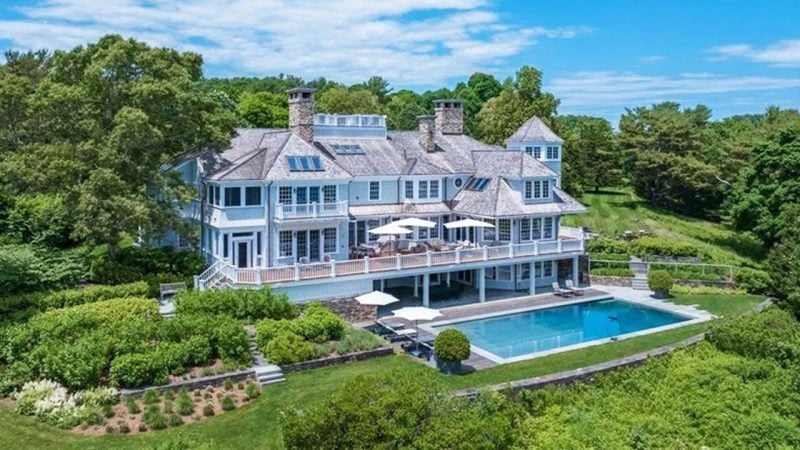
The Northeast United States stands as one of the country’s most economically developed and culturally diverse regions, offering residents a unique blend of historic charm, urban sophistication, and natural beauty.
From the bustling metropolitan areas of Massachusetts to the scenic landscapes of Vermont and Maine, this region provides diverse living options that cater to various lifestyles and preferences.
Finding the ideal place to call home in the Northeast requires careful consideration of factors such as cost of living, job opportunities, educational resources, and quality of life amenities.
This comprehensive guide examines thirty exceptional communities across the region, ranging from major cities like Boston and Pittsburgh to charming smaller towns such as Saratoga Springs and Portsmouth.
Each location offers distinct advantages, whether residents prioritize career advancement, educational excellence, recreational opportunities, or simply a strong sense of community.
Here are the 30 best places to live in the Northeast:
1. Portland, Maine
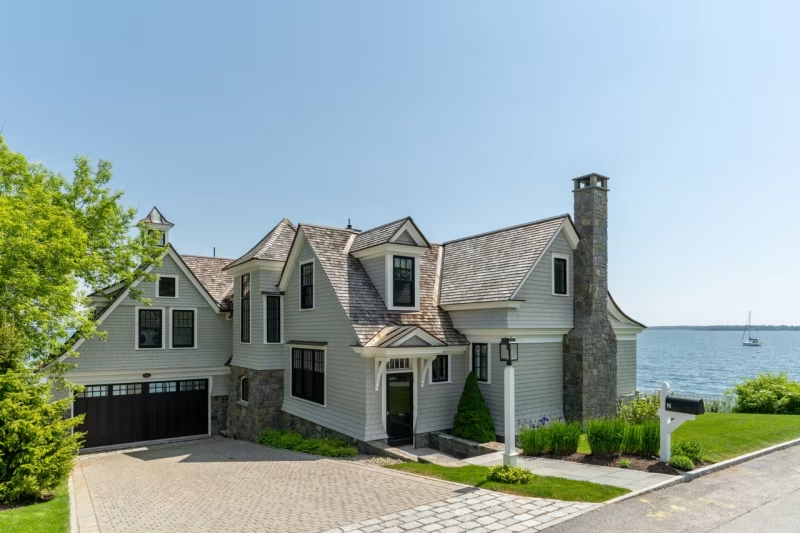
Portland stands as Maine’s largest city and cultural center. The city combines urban amenities with easy access to coastal recreation and outdoor activities year-round.
The downtown area features a rapidly expanding art museum with works by renowned artists like Warhol and Monet. Portland also offers unique attractions including the International Cryptozoology Museum.
Maine maintains the lowest cost of living in New England. This makes Portland a comparatively affordable option for homebuyers in the region.
The city provides four-season recreational opportunities while maintaining its coastal charm. Portland receives consistent recognition as one of the top places to live in Maine.
Portland offers diverse cultural experiences ranging from classic museums to offbeat attractions. The city balances urban conveniences with natural beauty and outdoor access.
2. Boston, Massachusetts
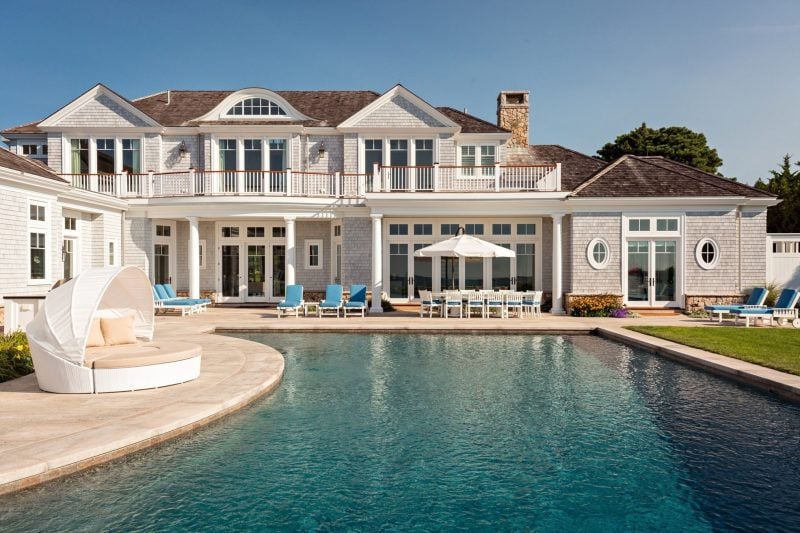
Boston stands as one of America’s most historically significant cities and a premier destination for residents seeking quality education and career opportunities. The city combines colonial charm with modern innovation, creating a unique urban environment.
The greater Boston area offers diverse neighborhoods to suit different lifestyles. Beacon Hill provides historic charm with cobblestone streets and brownstone architecture. The South End features vibrant cultural attractions and dining options.
Cambridge consistently ranks among the top places to live nationally. The city benefits from proximity to Harvard University and MIT, fostering an intellectual atmosphere and strong job market.
Boston’s public transportation system connects residents throughout the metropolitan area. The city offers world-class healthcare facilities, including Massachusetts General Hospital and Brigham and Women’s Hospital.
Suburban communities like Brookline provide family-friendly environments with excellent schools while maintaining easy access to downtown Boston.
3. Ithaca, New York
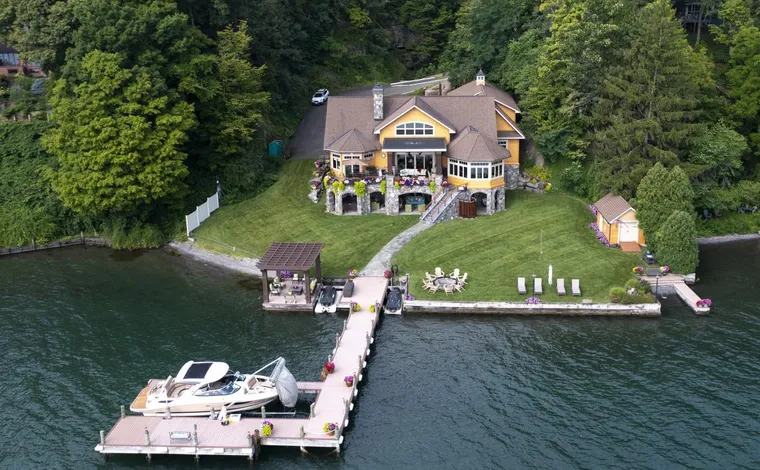
Ithaca combines university town energy with natural beauty in central New York’s Finger Lakes region. The city sits alongside Cayuga Lake, surrounded by rolling hills and numerous waterfalls.
Home to Cornell University and Ithaca College, the area boasts one of the highest concentrations of college-educated residents in the country. This creates a vibrant intellectual atmosphere and diverse cultural scene.
The cost of living remains relatively affordable compared to other Northeast cities. Residents enjoy excellent walkability in the downtown core and easy access to hiking trails and outdoor recreation.
Fall Creek, Southside, and Northside neighborhoods offer distinct character and amenities. Cayuga Heights ranks as the top-rated area in Tompkins County for quality of life.
The local economy benefits from low unemployment rates and a mix of education, healthcare, and technology employers. Arts venues, restaurants, and festivals provide year-round entertainment options.
4. Pittsburgh, Pennsylvania
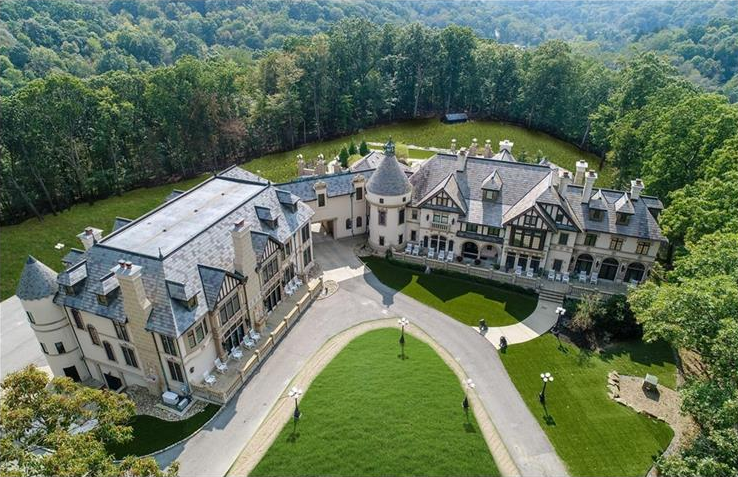
Pittsburgh ranks among the top cities to live in 2025 with a population of 310,519. The city earned recognition for its exceptional quality of life and affordable housing options.
The Steel City features 450 bridges connecting its diverse neighborhoods across 90 distinct areas. These bridges link communities throughout the metropolitan region.
Pittsburgh offers residents access to top-tier universities and one of the nation’s best healthcare systems. The city maintains excellent public transportation connecting all major areas.
Housing costs remain significantly below national averages while providing strong real estate values. The low cost of living makes Pittsburgh attractive to young professionals and families.
Cultural amenities include world-class museums and a vibrant arts scene. Professional sports teams and numerous entertainment venues add to the city’s appeal.
The crime rate stays reasonable compared to similar-sized cities. Pittsburgh’s economic diversity provides stable employment opportunities across multiple industries.
5. Burlington, Vermont
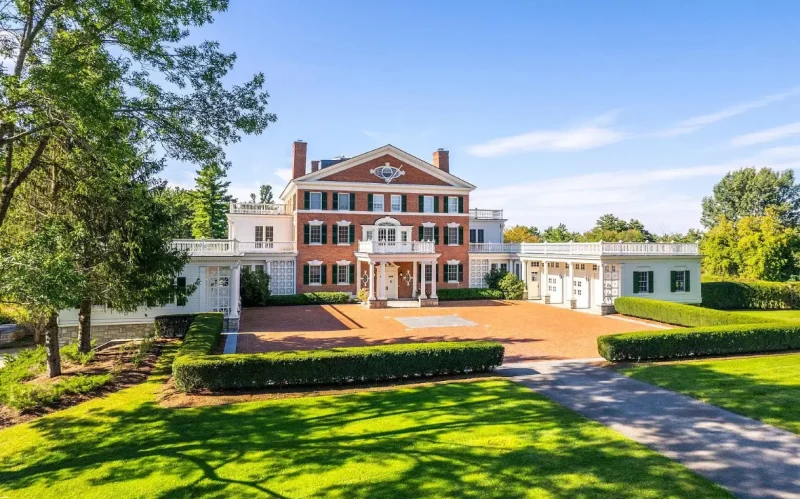
Burlington combines New England charm with modern amenities along Lake Champlain’s shores. The city offers exceptional quality of life with breathtaking mountain and waterfront scenery.
The median home price reaches $450,000, reflecting the area’s desirability. Burlington’s South End features numerous galleries and breweries that attract residents and visitors alike.
The city provides convenient access to outdoor recreation. Multiple ski mountains and hiking trails sit within 20-30 minutes of downtown Burlington.
South Burlington consistently ranks as one of Vermont’s top places to live. The greater Burlington area includes several highly-rated neighborhoods and surrounding communities like Shelburne.
Burlington’s location offers both urban conveniences and rural accessibility. Residents enjoy vibrant waterfront communities while maintaining easy access to Vermont’s famous Green Mountains and outdoor activities.
6. New Haven, Connecticut
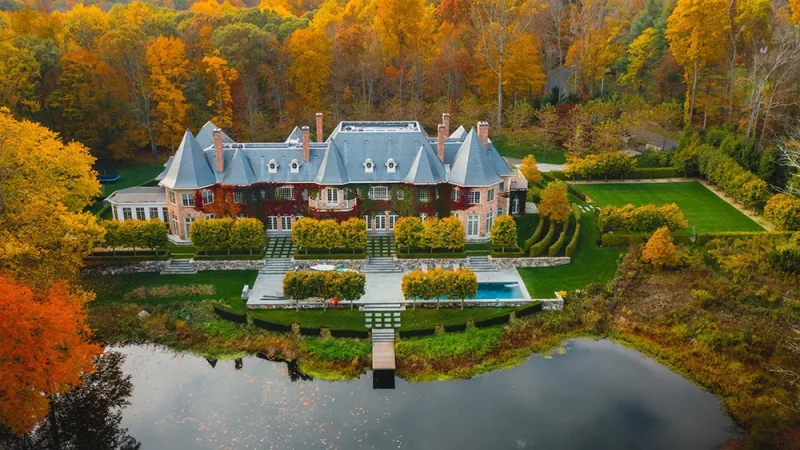
New Haven combines academic excellence with cultural richness as home to prestigious Yale University. The city offers residents access to world-class educational institutions and historic architecture throughout its neighborhoods.
Known as “The Elm City,” New Haven was the first American city to establish a public elm tree planting program. This commitment to urban greenery continues to enhance the city’s livability today.
The housing market provides more affordable options compared to Connecticut’s state average of $393,792. Residents benefit from diverse neighborhoods that cater to different lifestyle preferences and budgets.
New Haven’s vibrant cultural scene includes excellent dining options, shopping districts, and numerous historic sites. The city blends New England charm with modern urban amenities.
The area attracts young professionals, families, and academics seeking an intellectually stimulating environment. New Haven’s location provides convenient access to both New York City and Boston.
7. Hartford, Connecticut
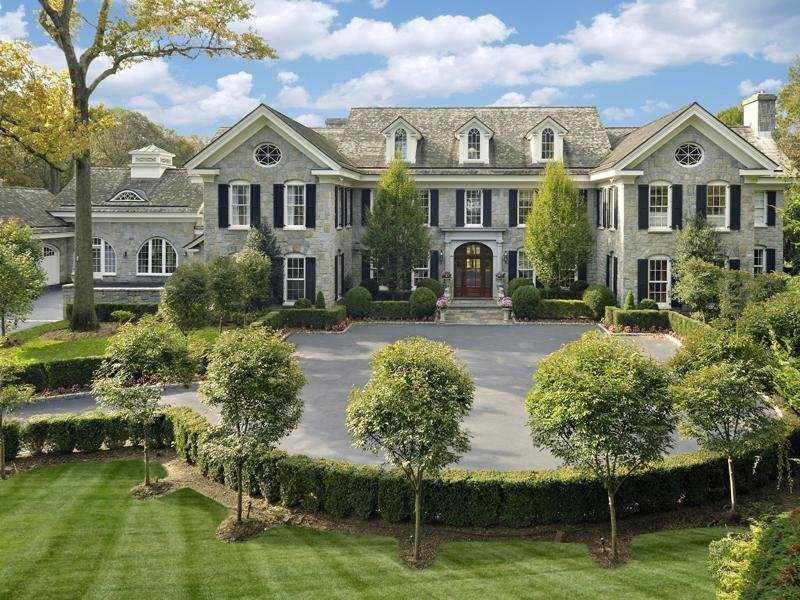
Hartford serves as Connecticut’s capital and offers residents affordable housing compared to other Northeast cities. Home prices in the area remain below the state average of $393,792, making it accessible for many buyers.
The city provides a blend of historic charm and modern amenities. Hartford features numerous cultural attractions, parks, and educational institutions that contribute to its appeal.
U.S. News and World Report ranked the Hartford metro area among the top 150 places to live nationally. The ranking reflects the area’s strong quality of life scores across multiple categories.
The Hartford region benefits from its central location in Connecticut. Residents enjoy access to both urban amenities and nearby natural areas throughout the state.
Multiple data sources consistently recognize Hartford area communities as desirable places to live. These rankings consider factors like cost of living, schools, crime rates, and local amenities when evaluating neighborhoods.
8. Providence, Rhode Island
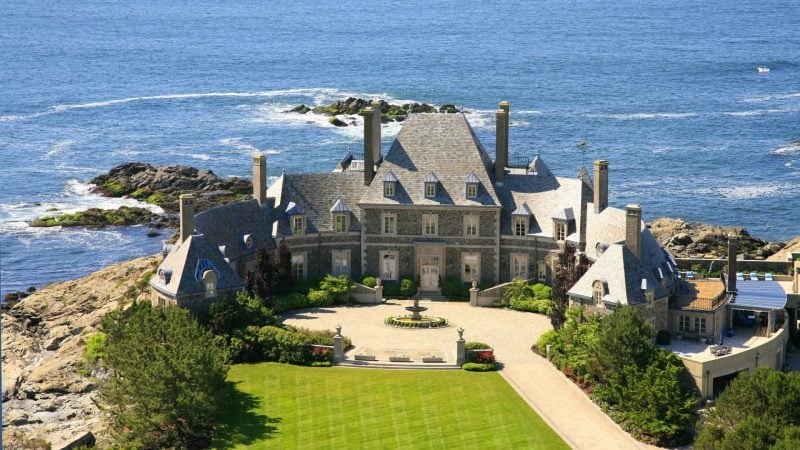
Providence combines historical charm with modern opportunities in New England’s smallest state. The city sits at the head of Narragansett Bay on Rhode Island’s eastern edge.
Brown University, an Ivy League institution, anchors the local economy and provides significant research opportunities. The University of Rhode Island also contributes to the region’s educational reputation.
The city ranks highly for affordability compared to other northeastern metropolitan areas. Home prices average around $401,805, aligning with Rhode Island’s state average.
Providence offers diverse neighborhoods suited to different lifestyles and budgets. The job market remains strong across multiple sectors, supported by the presence of major universities.
June through September provide the most pleasant weather conditions. The city maintains good access to both urban amenities and New England’s coastal attractions.
9. Concord, New Hampshire
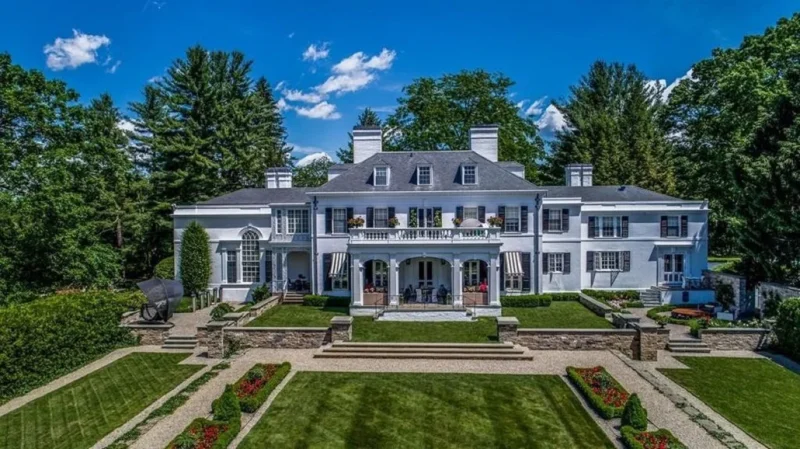
New Hampshire’s capital city offers residents a balanced lifestyle combining government employment opportunities with outdoor recreation access. The city serves as the state’s political center while maintaining a manageable small-city atmosphere.
Concord provides stable employment through state government positions and local businesses. The downtown area features historic architecture and local shops that create a walkable community environment.
Outdoor enthusiasts benefit from proximity to White Mountains National Forest and Bear Brook State Park. These locations offer hiking trails and natural scenery within easy driving distance of the city.
The Canterbury Shaker Village nearby provides cultural attractions and historical education opportunities. This living museum preserves important aspects of American religious heritage.
Housing costs in Concord remain more affordable compared to larger northeastern metropolitan areas. The city attracts families and professionals seeking small-town living with access to state-level amenities and services.
10. Saratoga Springs, New York
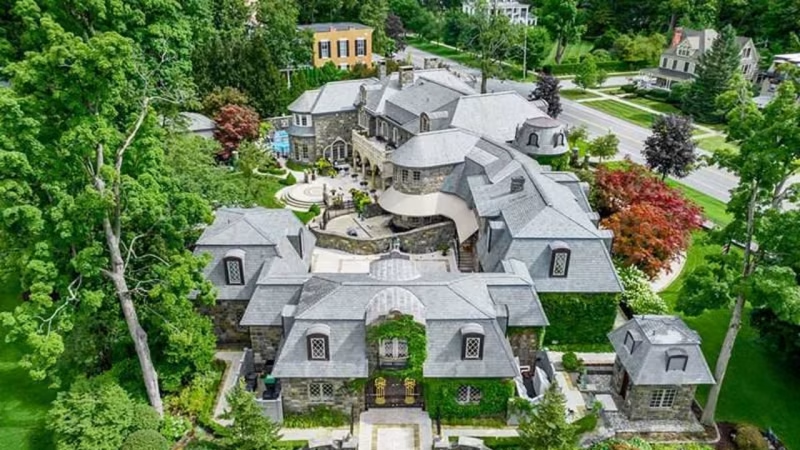
Saratoga Springs combines historic charm with modern amenities in upstate New York. The city attracts residents with its mineral springs, horse racing track, and well-preserved Victorian architecture.
The median household income reaches $85,946, significantly higher than the national average. The poverty rate sits at just 7.2%, creating a stable economic environment for families.
Housing costs remain below New York’s state average of $589,579. This affordability makes the area accessible compared to other desirable Northeast locations.
The downtown area features cultural activities, festivals, and dining options throughout the year. Residents enjoy access to green spaces and outdoor recreation opportunities.
Educational systems receive high marks from ranking services. The combination of quality schools and cultural amenities appeals to families seeking a balanced lifestyle.
11. Portsmouth, New Hampshire
Portsmouth combines historic colonial charm with modern amenities in a coastal setting. The city offers big city resources while maintaining its small-town character.
The median home price stands at $644,300, which is 47.5% higher than average. This reflects the desirability of the location and quality of life available.
College town atmosphere permeates the community. Arts and culture play significant roles in daily life, with numerous venues and events throughout the year.
Portsmouth consistently ranks among top family-friendly destinations. Fortune magazine placed the city 10th on its Best Places to Live for Families 2024 list.
The location provides access to New England’s coastal attractions. Residents enjoy both urban conveniences and natural beauty within close proximity.
Young professionals find active social scenes and recreational opportunities. The city attracts diverse age groups seeking quality living environments.
12. Albany, New York
Albany serves as New York’s capital city and offers residents a blend of history, culture, and economic opportunity. The city features beautiful architecture and numerous higher education institutions.
Home prices in Albany remain significantly lower than the state average of $589,579. This affordability makes it attractive for families and young professionals seeking value in the Northeast housing market.
The city boasts a growing tech scene and entrepreneurial spirit. Albany’s strategic location provides easy access to major cities like Boston and New York City.
Outdoor recreational opportunities abound in the surrounding upstate region. Residents enjoy hiking, skiing, and other activities within driving distance of the capital.
Albany previously ranked as the top place to live among New York’s five major cities. While it has dropped to fourth place, it maintains strong livability scores for the region.
13. Scranton, Pennsylvania
Scranton offers residents an affordable cost of living and diverse neighborhood options. The city features several distinct areas that cater to different preferences and lifestyles.
The Hill Section provides a vibrant atmosphere centered around the University of Scranton. East Mountain delivers quiet suburban living with scenic city views.
North Scranton presents affordable housing in a diverse community setting. Tripp Park appeals to families with quality schools and recreational areas.
The median household income reaches $58,834 with median property values at $192,123. Homeownership rates stand at 67 percent across the metropolitan area.
Nearby suburbs like Clarks Summit and Moosic rank among the top residential choices. These areas combine small-town charm with proximity to urban amenities.
Scranton’s location in northeastern Pennsylvania provides access to natural forests and outdoor recreation. The city maintains connections to major metropolitan areas while preserving its distinct regional character.
14. Cambridge, Massachusetts
Cambridge stands as one of Massachusetts’ premier destinations for residents seeking intellectual vibrancy and cultural diversity. The city hosts Harvard University and MIT, creating an atmosphere rich in academic excellence and innovation.
The community offers excellent public schools and educational opportunities beyond its world-renowned universities. Crime rates remain relatively low compared to other urban areas in the region.
Housing costs reflect the city’s desirability, with prices higher than the national average. The job market thrives due to the concentration of universities, research institutions, and technology companies.
Cambridge features distinct neighborhoods that cater to different lifestyles and preferences. Public transportation connects residents efficiently to Boston and surrounding areas.
The city provides abundant cultural amenities including museums, theaters, and dining establishments. Local parks and the Charles River offer outdoor recreation opportunities within the urban setting.
15. Rochester, New York
Rochester offers an affordable alternative to more expensive northeastern cities. The city ranks among the top places to live in New York state.
Home prices in Rochester remain significantly below New York’s state average of $589,579. This makes homeownership more accessible for families and young professionals.
The city features diverse neighborhoods catering to different lifestyles. Residents can choose from urban environments, historic districts, or quiet suburban areas.
Rochester maintains excellent public schools and a strong job market. The city also provides a vibrant cultural scene with numerous amenities.
Multiple factors contribute to Rochester’s appeal, including low crime rates and good higher education access. The cost of living remains reasonable compared to other northeastern metropolitan areas.
Western New York’s largest city continues attracting people seeking balanced lifestyles. Rochester combines urban conveniences with small-city charm and affordability.
16. Lancaster, Pennsylvania
Lancaster combines rural charm with urban amenities in Pennsylvania’s Amish country. The city has a population of 57,683 residents and offers an urban-suburban mix environment.
Most residents rent their homes in Lancaster. The city features numerous restaurants, coffee shops, and parks throughout the area.
Lancaster attracts many families seeking a blend of historical character and modern conveniences. The community tends to lean liberal politically.
The city is known for its rich Amish heritage and historical significance. Residents enjoy access to cultural attractions related to Pennsylvania Dutch traditions.
Lancaster provides a unique living experience with its combination of agricultural landscapes and city services. The area offers good amenities while maintaining its distinctive cultural identity.
17. Maine’s Midcoast Region
Maine’s Midcoast Region offers an ideal blend of coastal charm and small-town living. The area stretches from Brunswick to Belfast, encompassing picturesque harbors and historic maritime communities.
Bath serves as the region’s shipbuilding hub, home to Bath Iron Works and the Maine Maritime Museum. The city provides steady employment opportunities while maintaining its historic character along the Kennebec River.
Camden attracts residents with its stunning harbor views and proximity to Camden Hills State Park. The town features a walkable downtown area with local shops, restaurants, and cultural amenities.
Rockland has transformed into a vibrant arts destination while preserving its working waterfront heritage. The Farnsworth Art Museum and numerous galleries contribute to the community’s cultural appeal.
Housing costs remain more affordable than many coastal New England areas. Residents enjoy year-round outdoor recreation, from sailing and kayaking to hiking and skiing nearby mountains.
18. Glens Falls, New York
Glens Falls ranks as the 7th best place to live in New York State. This small city in Warren County offers residents an affordable alternative to more expensive areas across the state.
The city has a population of 14,678 and provides a dense suburban atmosphere. Most residents own their homes rather than rent.
Home prices in Glens Falls cost significantly less than New York’s state average of $589,579. The affordability factor makes it attractive for families and young professionals.
The community features numerous restaurants and parks for residents to enjoy. Public schools in the area perform above average compared to state standards.
Glens Falls sits near the Adirondack Mountains, providing access to outdoor recreation. The location offers both small-town charm and proximity to natural attractions.
Young professionals make up a notable portion of the population. The area maintains a strong sense of community while offering modern amenities.
19. Keene, New Hampshire
Keene sits in southwestern New Hampshire with a population of approximately 23,000 residents. The city serves as a hub for education and arts in Cheshire County.
Home prices in Keene remain below the state average of $295,170, making it an affordable option. The cost of living stays below average compared to other New Hampshire locations.
The downtown area features a variety of local businesses and shops. Keene regularly hosts community events throughout the year.
Residents have access to parks and cultural activities within the city. The location provides stunning natural scenery typical of New Hampshire.
Keene scores well in livability rankings, earning recognition as one of New Hampshire’s better places to live. The city attracts residents of various ages due to its amenities and community atmosphere.
20. State College, Pennsylvania
State College centers around Penn State University, creating a vibrant college town atmosphere. The city consistently ranks among the top places for quality of life in the United States.
Downtown offers urban amenities with easy access to shops, restaurants, and campus. The Holmes-Foster neighborhood features historic homes and strong community connections.
The State College metro area provides low cost of living compared to many Northeast cities. Job opportunities remain strong due to the university presence and local businesses.
Residents enjoy access to cultural amenities including museums, theaters, and music venues. The area offers excellent educational opportunities beyond the main university campus.
Home prices average higher than Pennsylvania’s state average of $270,478. Family-friendly neighborhoods like Greentree provide good schools and parks for residents with children.
21. Manchester, New Hampshire
Manchester stands as New Hampshire’s largest city and consistently earns recognition as one of the best places to live in the United States. The city ranks #12 out of 551 US cities according to recent rankings.
Residents benefit from excellent amenities and a reasonable cost of living compared to other Northeast cities. The education system receives high marks, making it attractive for families.
Manchester offers convenient access to outdoor recreation in the White Mountains. The city provides urban amenities while maintaining New Hampshire’s small-town charm.
Employment opportunities are strong across various sectors. The local economy supports both established businesses and growing industries.
Housing costs remain more affordable than many Northeast metropolitan areas. Multiple neighborhoods offer different price points and lifestyle options for residents.
22. Montpelier, Vermont
Montpelier stands out as America’s smallest state capital with just over 8,000 residents. The city offers a dense suburban feel where most residents own their homes.
The community attracts many young professionals and maintains a liberal political atmosphere. Streets feature unique local shops, restaurants, and cafes that create a charming downtown environment.
Montpelier ranks third among Vermont’s best places to live with a livability score of 84 out of 100. The city maintains low crime rates and receives high marks for quality of life indicators.
Residents enjoy access to numerous parks, hiking trails, and nearby ski resorts. The poverty rate sits at just 4%, significantly lower than the national average.
The typical household earns $65,668 annually, close to the national median. Public schools receive positive ratings from residents and education rankings consistently perform well.
23. Kingston, New York
Kingston sits in Ulster County along the Hudson River with a population of approximately 23,400 residents. The city offers easy access to New York City while maintaining a lower cost of living than the state average.
The community provides a dense suburban atmosphere where most residents rent their homes. Kingston features numerous bars, restaurants, coffee shops, and parks throughout the city.
Both families and young professionals choose Kingston as their home base. The area attracts residents with moderate political views who appreciate the city’s diverse offerings.
Kingston ranks as the 11th best place to live in Ulster County based on factors including cost of living, public education, crime rates, and housing options. The city serves as the county seat and offers stunning Hudson River views.
The arts scene and historic architecture add cultural value to daily life. Outdoor recreation opportunities appeal to active residents seeking nearby nature activities.
24. Brunswick, Maine
Brunswick stands out as an ideal college town in Cumberland County. The community maintains a manageable size that appeals to families and professionals alike.
The city earns recognition for its balanced approach to small-town living. Residents enjoy access to both educational opportunities and coastal amenities throughout the year.
Brunswick scores a 68 on quality of life rankings, reflecting strong performance across multiple categories. The city demonstrates lower crime rates and solid neighborhood options for potential residents.
The median household income reaches $63,458 annually. The poverty rate sits at 10.1%, which runs 28% below the national average.
Housing quality varies significantly across different Brunswick neighborhoods. The real estate market reflects strong demand in the most desirable residential areas.
The location provides easy access to Maine’s outdoor recreation opportunities. Residents can enjoy four-season activities while maintaining proximity to urban conveniences in nearby communities.
25. Easton, Pennsylvania
Easton serves as a suburb of Allentown with approximately 29,000 residents in Northampton County. The city offers a dense suburban atmosphere where most residents rent their homes.
The downtown area features historic architecture and represents the most desirable neighborhood for living. Residents can find affordable housing options in the West Ward along Northampton Street.
Easton provides numerous restaurants, coffee shops, and parks for residents. The public schools perform above average compared to state standards.
The city attracts many families and maintains a liberal-leaning population. Located in Pennsylvania’s Lehigh Valley region, Easton ranks third out of 109 cities statewide for quality of life.
The community offers limited neighborhood variety due to its small size, though several areas stand out as prime residential locations.
26. Newport, Rhode Island
Newport combines historic charm with coastal luxury along Rhode Island’s scenic shoreline. The city attracts residents with its rich maritime heritage and stunning ocean views.
Home prices in Newport exceed Rhode Island’s state average of $401,805. The premium reflects the city’s desirable waterfront location and historic significance.
Newport offers high-quality neighborhoods that rank among the state’s most sought-after residential areas. The community provides access to excellent amenities and cultural attractions.
Crime rates remain relatively low compared to many urban areas. Educational opportunities and job markets contribute to the area’s appeal for families and professionals.
The city’s coastal setting provides year-round recreational activities. Residents enjoy sailing, historic mansion tours, and vibrant downtown dining options.
Newport’s compact size creates a walkable community atmosphere. The combination of history, natural beauty, and upscale living makes it attractive to those seeking premium coastal residence.
27. Hudson, New York
Hudson offers residents a charming blend of historic architecture and modern amenities. The city features tree-lined streets filled with cafes, restaurants, art galleries, and boutiques that create a vibrant downtown atmosphere.
Housing costs in Hudson remain significantly below New York State’s average of $589,579. This affordability makes the area attractive to newcomers seeking quality living without metropolitan prices.
The Hudson Valley region has experienced substantial growth, welcoming over 7,000 new residents since 2020. Beautiful landscapes, excellent schools, and highly-rated dining establishments contribute to the area’s appeal.
Hudson provides access to top-notch performing arts venues and cultural attractions throughout the valley. The location offers small-town charm while maintaining proximity to larger metropolitan areas for career opportunities and entertainment.
28. Dover, New Hampshire
Dover ranks among New Hampshire’s top places to live thanks to its variety of activities and below-average cost of living. The city offers residents an appealing blend of affordability and amenities.
Home prices in Dover exceed the state average of $295,170. The housing market reflects the city’s desirability among potential residents.
Downtown Dover stands out for its entrepreneurial spirit and high-tech companies. These businesses have created numerous career opportunities and fostered economic growth within the city.
The Cocheco River Walk provides residents with abundant trails across various landscapes. Local theaters and frequent festivals offer cultural experiences throughout the year.
Dover’s location east of Concord provides convenient access to both urban amenities and natural attractions. The city combines small-town charm with modern conveniences for residents.
29. Binghamton, New York
Binghamton sits in Broome County near the Pennsylvania border in upstate New York. The city offers affordable housing and a low cost of living compared to other Northeast locations.
The typical household earns $35,730 annually, well below the national median. However, housing costs remain accessible for many residents.
Binghamton serves as a cultural hub with a vibrant arts scene and strong community connections. The city features beautiful parks and sits at the confluence of the Susquehanna and Chenango Rivers.
Weather presents challenges for some residents. The city experiences more cloudy days than most locations outside the Pacific Northwest and ranks high nationally for precipitation days.
The poverty rate reaches 32.7%, significantly higher than the national average. Despite economic challenges, residents appreciate the city’s cultural offerings and natural beauty in the Southern Tier region.
30. Chester County, Pennsylvania
Chester County ranks among Pennsylvania’s most desirable places to live. The county houses eight of the state’s 25 best places according to recent rankings.
Located in southeastern Pennsylvania, Chester County offers a mix of suburban and rural communities. The area maintains proximity to Philadelphia while providing more space and quieter neighborhoods.
The county’s population of 540,896 enjoys above-average median household incomes. Most residents own their homes rather than rent.
Housing costs exceed Pennsylvania’s state average of $270,478. The premium reflects strong demand and desirable amenities throughout the region.
Chester County provides numerous restaurants, coffee shops, and parks. The area attracts both families and young professionals seeking quality schools and community amenities.
Chesterbrook specifically earned recognition as a top-ranked suburb in national listings. The county’s eight communities in state rankings demonstrate consistent quality across multiple towns and townships.
Key Factors for Evaluating Quality of Life
Quality of life depends on measurable factors that directly affect daily living experiences. Financial stability, healthcare access, employment prospects, and cultural resources form the foundation of community satisfaction.
Cost of Living Considerations
Housing costs typically represent 25-30% of household income in desirable Northeast locations. Cities like Burlington, Vermont and Portland, Maine offer more affordable housing compared to Boston or New York City.
Key housing metrics include:
- Median home prices
- Average rent for one and two-bedroom apartments
- Property tax rates
- Housing availability and market trends
Transportation expenses vary significantly across the region. Urban areas with public transit systems reduce car dependency costs. Rural locations require vehicle ownership but offer lower parking and insurance rates.
Grocery and utility costs fluctuate based on local competition and infrastructure. New Hampshire residents benefit from no state sales tax. Connecticut and Massachusetts impose higher overall tax burdens on residents.
Access to Healthcare and Education
The Northeast contains leading medical institutions including Massachusetts General Hospital and Yale-New Haven Hospital. Rural areas face physician shortages and limited specialist access.
Healthcare quality indicators include hospital safety ratings, specialist availability, and average wait times for appointments. Insurance coverage options and costs affect accessibility for residents.
Education quality factors encompass:
- Public school test scores and graduation rates
- Student-to-teacher ratios
- College and university proximity
- Adult education and professional development programs
Massachusetts consistently ranks among top states for educational achievement. Vermont and New Hampshire maintain strong rural school systems despite smaller populations.
Higher education density provides cultural benefits and economic stability. College towns like Hanover, New Hampshire and Middlebury, Vermont offer intellectual communities and cultural programming.
Job Opportunities and Local Economies
Employment diversity protects communities from economic downturns. Boston’s technology and healthcare sectors provide stability. Financial services concentrate in New York City and Hartford.
Manufacturing remains important in smaller cities throughout New Hampshire, Vermont, and Maine. Tourism supports coastal and mountain communities seasonally.
Economic indicators include:
- Unemployment rates compared to national averages
- Job growth projections by industry
- Average salary ranges for common occupations
- Small business development opportunities
Remote work options expand location flexibility for professionals. High-speed internet availability becomes critical for distributed teams and digital nomads.
Entrepreneurship support through incubators and small business resources strengthens local economies. Access to venture capital and business mentorship varies significantly between urban and rural areas.
Community and Cultural Amenities
Recreation opportunities define lifestyle satisfaction for many residents. The Northeast offers skiing, hiking, beaches, and seasonal outdoor activities within reasonable driving distances.
Cultural institutions include museums, theaters, music venues, and art galleries. Cities like Providence and Burlington maintain active arts scenes despite smaller populations.
Community amenities include:
- Parks and recreational facilities
- Libraries and community centers
- Restaurants and local food scenes
- Shopping and entertainment options
Public safety directly impacts quality of life through crime rates and emergency response times. Rural areas typically report lower crime rates but longer emergency response times.
Social connectivity through community events, volunteer opportunities, and neighborhood organizations builds stronger local relationships. Walkable neighborhoods encourage interaction and reduce isolation.
Northeast U.S. Lifestyle Insights
The Northeast offers four distinct seasons with snowy winters and humid summers, extensive public transit networks in major cities, and abundant recreational opportunities from Atlantic beaches to mountain hiking trails.
Climate and Weather Patterns
The Northeast experiences a humid continental climate with significant seasonal variation. Winter temperatures typically range from 20°F to 40°F, with heavy snowfall common from December through March.
Snowfall averages 25-60 inches annually across most of the region. Cities like Boston and New York receive 40+ inches per year. Mountain areas in Vermont and New Hampshire can exceed 100 inches.
Summer months bring temperatures between 70°F and 85°F with high humidity levels. Coastal areas benefit from ocean breezes that moderate extreme heat.
Spring and fall provide mild temperatures and are considered the most pleasant seasons. Fall foliage peaks in October, drawing tourists throughout the region.
Transportation and Mobility
Public transportation systems are well-developed in major metropolitan areas. New York City’s subway system operates 24/7 with 472 stations across five boroughs.
Boston’s MBTA serves the Greater Boston area with subway, bus, and commuter rail connections. Philadelphia’s SEPTA provides similar regional coverage.
Amtrak connects major Northeast cities through the Northeast Corridor, offering high-speed rail service between Boston and Washington D.C. Travel time from New York to Boston is approximately 3.5 hours.
Car ownership remains necessary in suburban and rural areas. Interstate highways I-95, I-84, and I-90 provide major east-west and north-south connectivity.
Recreation and Outdoor Activities
The Atlantic coastline offers beaches, fishing, and sailing opportunities from Maine to New Jersey. Cape Cod, the Hamptons, and Jersey Shore attract millions of visitors annually.
Mountain recreation centers on the Appalachians, White Mountains, and Green Mountains. Ski resorts operate in Vermont, New Hampshire, and western Massachusetts from December through April.
Hiking trails include portions of the Appalachian Trail and numerous state parks. The region contains over 50 state parks and several national recreation areas.
Urban recreation features world-class museums, theaters, and professional sports teams. Cities offer extensive park systems, including Central Park in Manhattan and Boston Common.





